Exotic Animals
For Sale & Breeding
Exotic game relocation service, Exotic game for sale and Exotic game breeding services
Axis
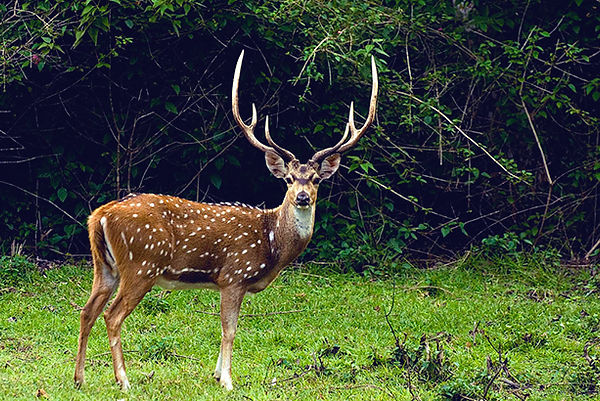
Black Buck
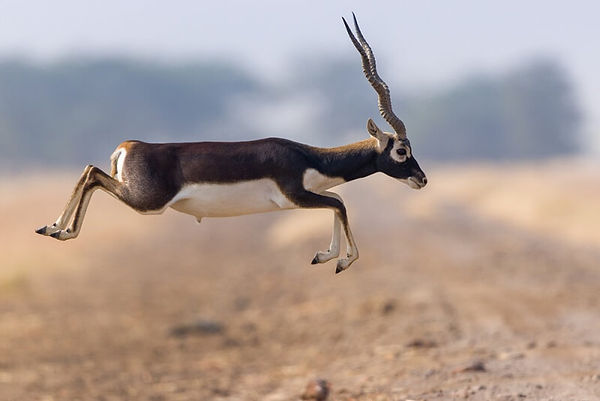
The Axis deer is a species of deer that is native to the Indian subcontinent. It was first described by German naturalist Johann Christian Polycarp Erxleben in 1777. A moderate-sized deer, male Axis reach nearly 35 in and females 28 in at the shoulder. While males weigh 66–165 lb, the lighter females weigh 55–99 lb. It is sexually dimorphic; males are larger than females, and antlers are present only on males. The upper parts are golden to rufous, completely covered in white spots. The abdomen, rump, throat, insides of legs, ears, and tail are all white. The antlers, three-pronged, are nearly 3.3 ft long.
The blackbuck, also known as the Indian antelope, is an antelope native to India and Nepal. It inhabits grassy plains and lightly forested areas with perennial water sources. It stands up to 29 to 33 in high at the shoulder. Males weigh 44–126 lb, with an average of 84 lb. Females are lighter, weighing 44–73 lb or 60 lb on average. Males have 14–30 in long, ringed horns, though females may develop horns as well. The white fur on the chin and around the eyes is in sharp contrast with the black stripes on the face. he blackbuck is the sole living member of the genus Antilope.
Gemsbok
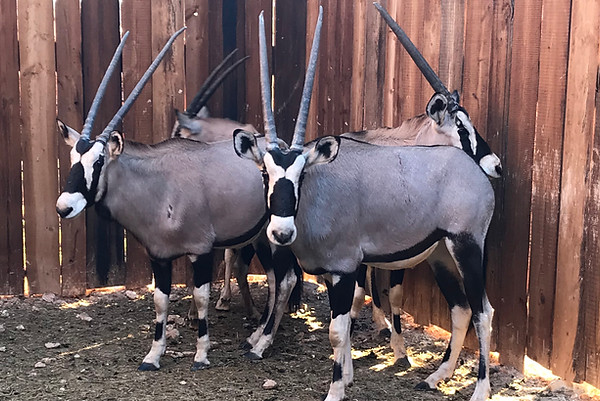
Oryx
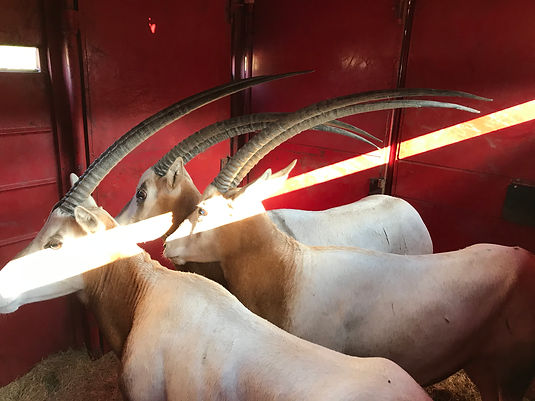
Gemsbok are light brownish-grey to tan in colour, with lighter patches toward the bottom rear of the rump. Their tails are long and black in colour. A blackish stripe extends from the chin down the lower edge of the neck, through the juncture of the shoulder and leg along the lower flank of each side to the blackish section of the rear leg. Gemsbok are the largest species in the genus Oryx. They stand about 3.9 ft at the shoulder. Male gemsbok can weigh between 400 and 530 lb, while females weigh 220–460 lb.
Oryx is a genus consisting of four large antelope species called oryxes. Three of them are native to arid parts of Africa, and the fourth to the Arabian Peninsula. Their fur is pale with contrasting dark markings in the face and on the legs, and their long horns are almost straight. Small populations of several oryx species have been introduced into the United States.
Water Buck
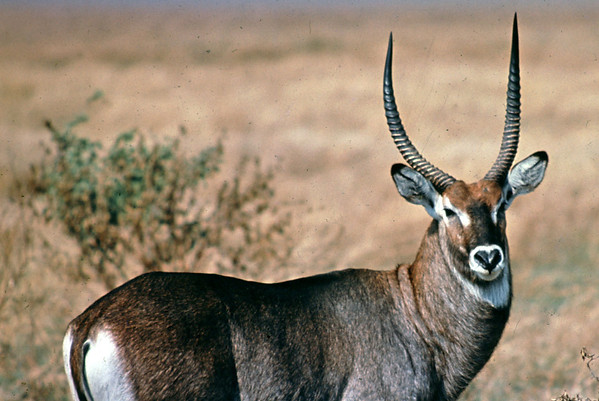
The waterbuck is a large antelope found widely in sub-Saharan Africa. It was first described by Irish naturalist William Ogilby in 1833. The head-and-body length is typically between 70–93 in and the average height is between 47 and 54 in. A sexually dimorphic antelope, males are taller as well as heavier than females. Males reach approximately 50 in at the shoulder, while females reach 47 in. Males typically weigh 437–578 lb and females 355–472 lb. The coat colour varies from brown to grey. The long, spiral horns, present only on males, curve backward, then forward and are 22–39 in long.
Red Stag

The Red Stag is the fourth-largest deer species behind moose, elk, and sambar deer. The male Red Stag is typically 69 to 98 in)long and weighs 350 to 530 lb. Antlers typically measure 28 in in total length and weigh 2.2 lb, although large ones can grow to 45 in and weigh 11 lb.
Nubian Ibex

The Nubian ibex is a desert-dwelling goat species found in mountainous areas of northern and northeast Africa, and the Middle East. The wild population is estimated at 1,200 individuals. Nubian ibexes stand around 2.1–2.6 ft tall at the shoulder and weigh around 110 lb. They are a light tan color, with a white underbelly; males also have a dark brown stripe down their backs. Nubian ibexes have long, thin horns that extend up and then backwards and down. In males, these reach around 3.3 ft in length, while in females they are much smaller 12 in.
Kudu

The kudus are two species of antelope of the genus Tragelaphus:
-
Lesser kudu, Tragelaphus imberbis, of eastern Africa
-
Greater kudu, Tragelaphus strepsiceros, of eastern and southern Africa
The two species of the Kudus look quite similar, though Greaters are larger than the lesser kudu. A large adult male Greater Kudu stands over 5 ft. tall, and a large male Lesser Kudu stand about 4 ft. tall. Both species have long horns, which point upward and slightly back, and curl in a corkscrew shape.
Fallow Deer
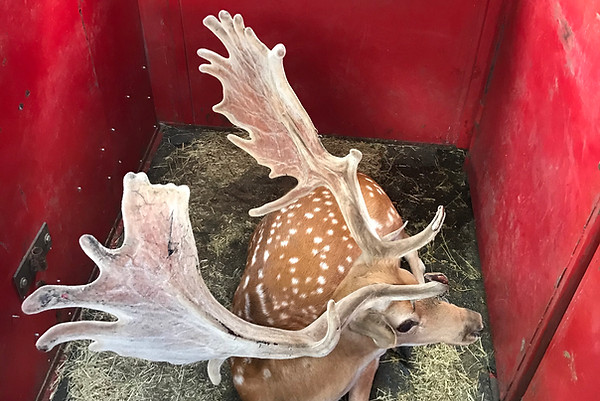
The fallow deer is a species native to Europe, but has been introduced around the world. The male fallow deer is known as a buck, the female is a doe, and the young a fawn. Adult bucks are 55–63 in long, 33–37 in in shoulder height, and typically 60–100 kg (130–220 lb) in weight; does are 51–59 in long, 30–33 in in shoulder height, and 66–110 lb in weight. The largest bucks may measure 75 in long and weigh 330 lb.Fawns are born in spring around 12 in and weigh around 10 lb. Their lifespan is around 12–16 years.
Zebra

Zebras are African equines with distinctive black-and-white striped coats. Zebra stripes come in different patterns, unique to each individual. Several theories have been proposed for the function of these stripes, with most evidence supporting them as a form of protection from biting flies. Zebras inhabit eastern and southern Africa and can be found in a variety of habitats such as savannahs, grasslands, woodlands, shrublands and mountainous areas.
